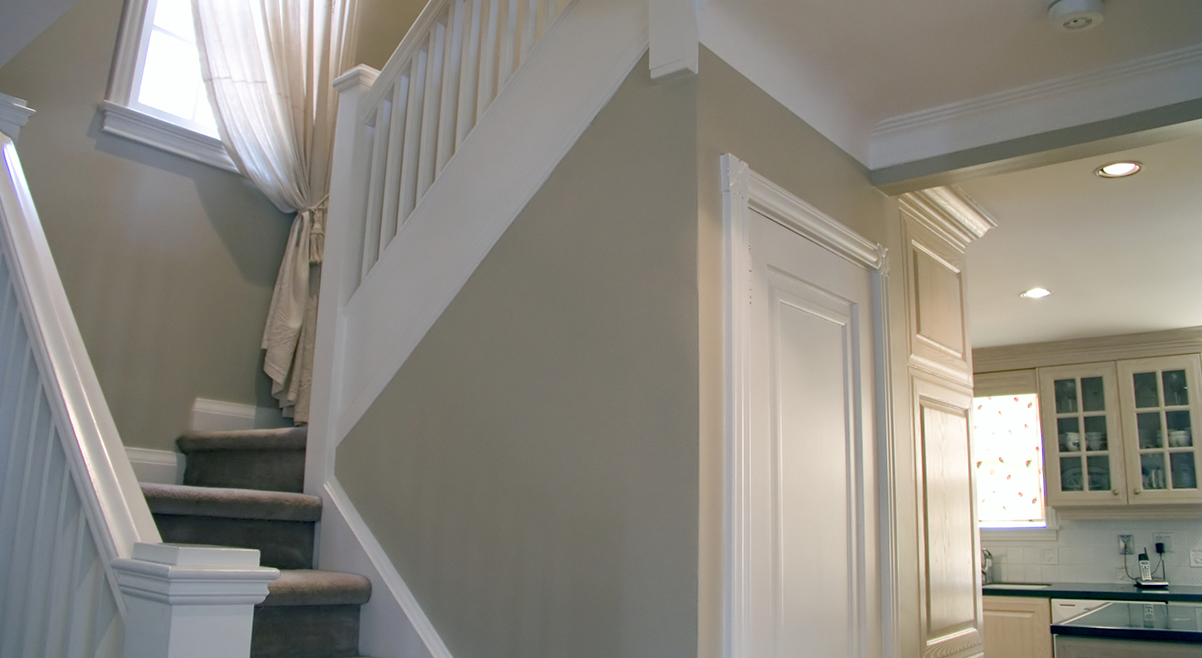When you first step inside your home after a long, hot summer day, you want to be greeted with cool, refreshing air. However, if you own a two-story home with central air – you may have noticed that the first floor is cool, but your second floor can be warm and uncomfortable. This can especially be a problem when family members go to sleep at night and the temperatures are much warmer than they are downstairs.
The usual culprit is that heat is being trapped on the second floor, and that the second-floor return capacity is insufficient to remove that heat. To handle this problem, there are a few common ways to improve cooling on the second floor of your home, which we’ll discuss in detail below.
Founded in 2002, Mission Mechanical is a locally and family-owned business that takes pride in serving both the residents and business owners of the Indianapolis area. For residential and commercial plumbing, cooling, heating and indoor air quality services, don’t hesitate to contact us today to schedule an appointment.
Why is the Second Floor Hotter than the First Floor?
As a matter of physics, hot air rises, which is why homes with second floors are typically warmer than the first floor despite how often you run your air conditioning system. Roofs take the brunt of the sun’s heat, and if your home doesn’t have an attic as a buffer or isn’t well insulated, the top floor of a home naturally feels hotter than downstairs.
How to Improve Second-floor Cooling
Consider the following tips to improve the cooling capacity in upstairs rooms.
Set the fan to be on all the time
Keeping the fan on the AC system running all day (with the air conditioning unit on) might solve some milder “heat trap” problems for your second story. You might also want to try adding a ceiling fan in critical rooms, such a second-floor bedroom. Ceiling fans don’t actually make a room cooler, but they can create a cooling effect by displacing the warmer, stagnant air that is in direct contact with our skin. Just remember to turn the ceiling fan off when nobody is in the room to avoid wasting electricity.
Make the second-floor return vent and duct bigger
This is a common method to move warmer air out of the second floor, but this method has its limitations and may also be limited in its effectiveness due to the construction of your home, your present central air system, and/or the location of the return vent or ducts. Contact the heating, air conditioning, and indoor air quality professionals at Mission Mechanical to inspect your return vent and ducts to see if modifications can be made.
Add a small return vent/duct to each room on the second floor
In theory, this method should allow more places for the hot air to be moved out of a second floor, but it also may suffer from limitations due to your home’s construction, the limits of your present central air system, and the location of the added vent/ducts. Before you try this step, contact a cooling specialist to evaluate your present central air system. The professionals at Mission Mechanical can help you determine the most effective and affordable options.
Divide the house into two zones, one for each floor
This solution requires the greatest investment and may require additional, new ductwork and a new central air system. If you’ve tried all the rest and still feel hot and bothered, investing in a “dual zone” cooling/heating system can solve the toughest cooling challenges.
With a “dual zone” HVAC system, you have two completely separate units that operate a single zone with separate thermostats.
Have your home’s ductwork inspected
Ductwork plays a crucial role in distributing conditioned air throughout your home. If you have faulty ductwork that wasn’t installed properly, or it’s old, deteriorating, and has leaks, it could affect how cool air is distributed throughout the whole house, possibly leaving your top floor unreasonably warmer than the bottom floors.
Consider installing a new air conditioner
Air conditioners that are more than 15 years old can often struggle to adequately and evenly cool your home, causing it to feel hot upstairs. The only way to find out whether it’s the AC’s fault is to contact a qualified HVAC technician to inspect the unit.
Simple steps to cool the upstairs down
If it’s especially hot outside and you’re just looking for some temporary relief from the heat upstairs, consider blocking the sun’s rays by closing curtains and blinds during the day. You can also consider sealing cracks or gaps around windows to prevent air leaks to stop warm air from entering your living spaces from outside.
A properly insulated home plays a critical role in keeping your entire home cool and at a comfortable temperature, while reducing your bills. Consider adding insulation to the attic, or contact an electrician to have an attic fan installed.
Contact Mission Mechanical for Your Home’s Cooling Needs
Unsure what to do? It’s always best that you consult with an experienced cooling/heating specialist first. Mission Mechanical has over 140 years of cooling, heating and plumbing experience. Our friendly and helpful home cooling specialists can analyze your second floor “hot spots” and provide energy-efficient and affordable solutions to help keep you cool and comfortable.
Call Mission Mechanical today at (317) 597-6247, or contact us online to schedule an appointment. We’ll help keep your upstairs cool throughout the hot summer months.





